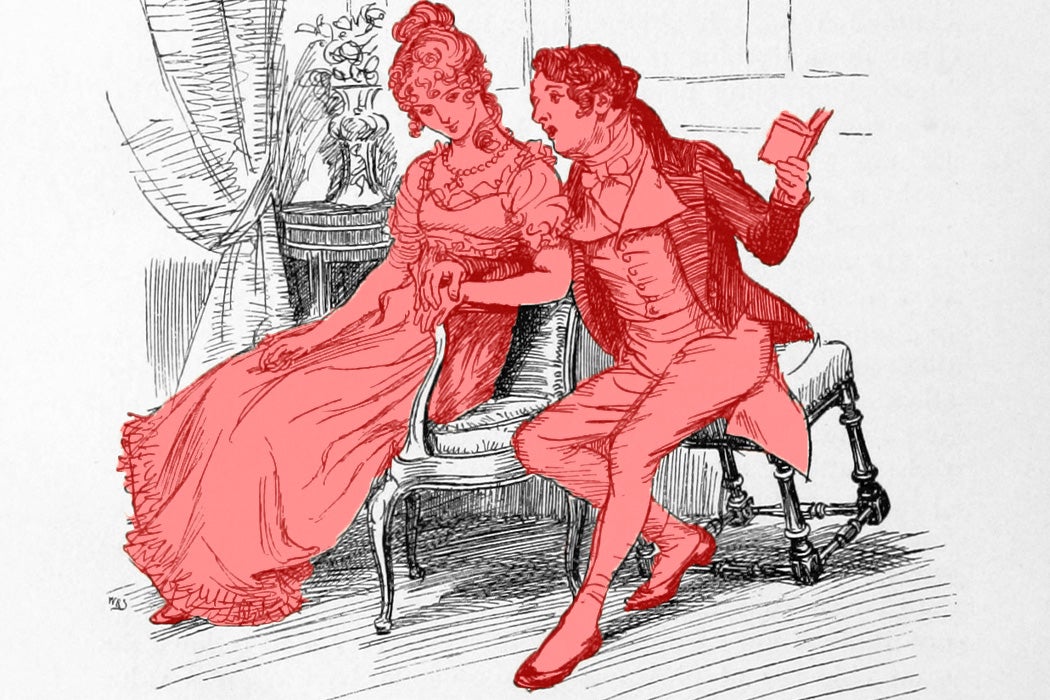When it comes to Jane Austen’s novels, Persuasion, her last published work, often gets overshadowed. It’s more subtle and less action-packed than fan favorites like Pride and Prejudice and Sense and Sensibility, and is one of her less-frequently adapted books. But as scholar Judy van Sickle Johnson argues, it offers plenty to swoon over—if you know where to look for it. Johnson teases out themes of passion, sex, and anticipation in what she calls Austen’s most physical book.
Persuasion’s physical reactions and interactions create a novel Johnson calls “surprisingly vibrant and seductive, though understated.” As in Austen’s other books, she uses the eyes and hands to create a world that is “physically stimulating, if not sexually suggestive”—a world of shy glances, chance meetings, and cramped spaces that throw its heroine and hero together again and again.
The novel follows Anne Elliot, a 27-year-old spinster who has, seven years earlier, broken off an engagement with naval officer Frederick Wentworth, succumbing to family pressure despite her own affection. Her past comes back to haunt her when her old beau, now a captain in the British Navy, returns. Only after many torturous scenes of emotional restraint are they reunited, brought together by an impassioned letter of Wentworth’s that may count as one of fiction’s sexiest love notes.
Johnson explores Austen’s use of blushes, beating hearts, physical gestures, and almost-contact—devices that weave a web of physicality around Anne and Wentworth. “Little circumstances—when eyes just miss, or when hands touch, whether by accident or intent—are interspersed among more dramatic scenes in which a man and woman feel acutely each other’s physical presence,” she writes. Johnson finds deep significance in these tiny gestures, and analyzes moments of physical intimacy between Elliot and her suitors.
For Johnson, part of the power of Austen’s writing is in her “stage direction”: the physical constellation of characters in scenes like the pivotal one that takes place in a concert hall. In the scene, Anne realizes that Wentworth is jealous of her suitor, Mr. Elliot. Yet they speak remarkably few words. Instead, Anne’s desire is sharpened by the movements of the other concertgoers. Mr. Elliot’s ridiculousness is illustrated as he interjects his unwanted presence between Anne and Wentworth, pinning himself to her side. And Wentworth’s desire for Anne is communicated by his angry departure.
Once a Week
But Anne gets her man, thanks to a passionate proposal via letter. “A word, a look will be enough” to let him know she wants to marry him, he writes, and when they exchange that glance, Wentworth walks next to Anne without speaking. At this point, writes Johnson, “Austen’s work is virtually done.”
For some readers, Persuasion is unsatisfying, a novel of stifled passions and unspoken desires. But Johnson finds pleasure and passion in its physicality, which she argues is the strongest in all of Austen’s novels. Though it is subtle, she writes, “Persuasion is more than a slight acknowledgment that men and women have physical needs and desires for closeness and contact.”







